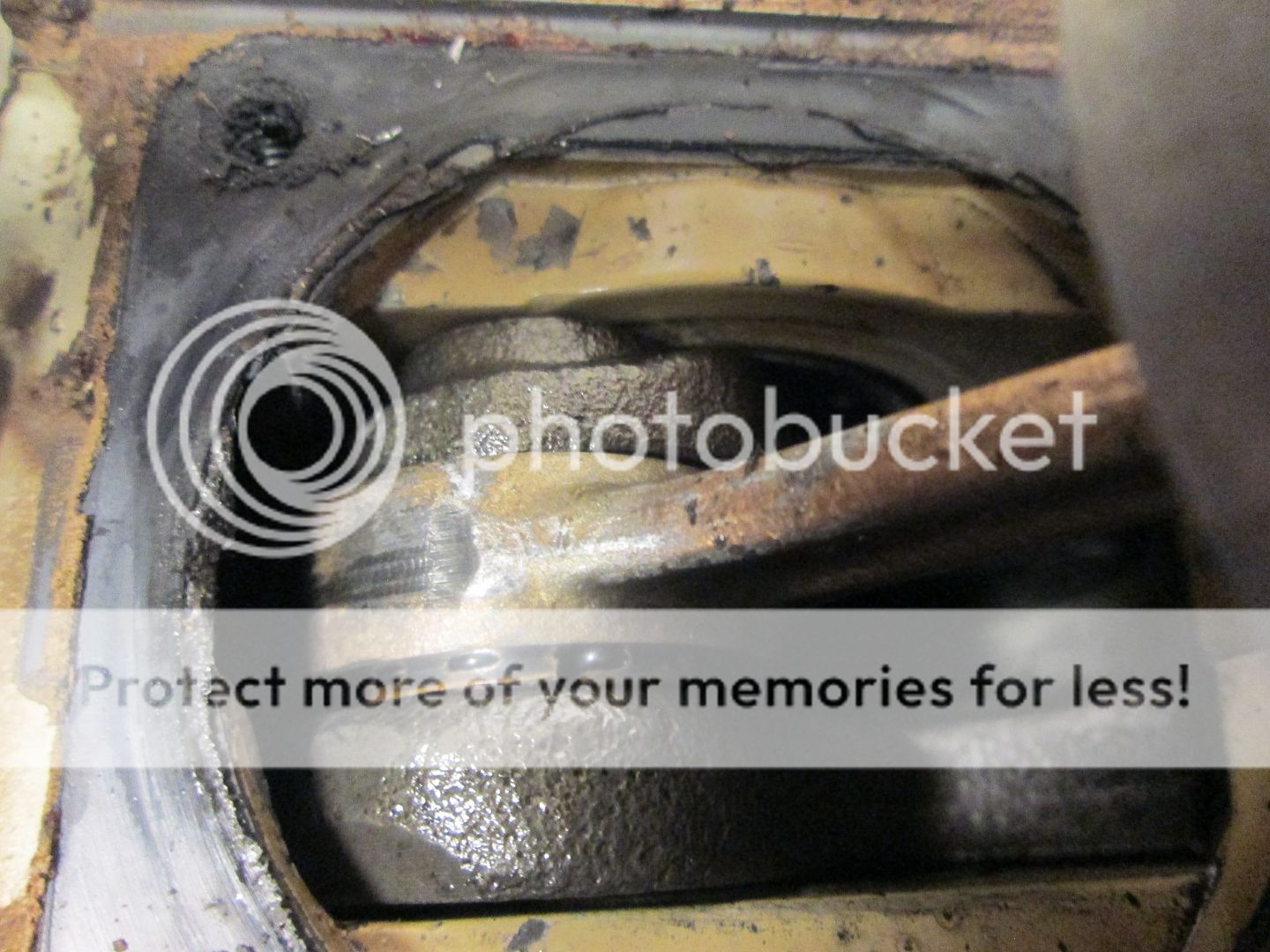windthrown
361 Junkie
One question I can answer is that gasoline octane is definitely reduced with the addition of premix oil. From information posted out there, including BP, Yamaha and Rotax, octane drops about 2 points when oil is mixed with gas at a rate of 50:1. It varies somewhat with the type of oil used.
Also the piston top pitting is not the only damage you can get from running low octane gas. Scoring and scuffing often occurs, and looks a lot like the damage from straight gassing or overheating (running lean). This is because of flaring and uneven burn pressure at TDC, which causes piston tilt and excessive scuffing. I had a series of photos showing this, but I cannot find them. Madsens has a good photo of an example of really low octane damaged piston though:
http://www.madsens1.com/saw_fuelmix.htm
Also from what I can glean from the detonation photos here, the majority of detonation pitting is on the outer edges of the pistons. If the typical MM saw has a much narrower squish band, as shown in many of his porting threads, the reduction of the outer squish area would lower the effects of detonation and uneven flaring, because there is less compressed fuel volume out there in the squish at TDC and hence less force causing pitting or piston tilt. Detonation may well be still happening with lower octane gas, but its just on a smaller scale and not noticeable with the naked eye. The modified cylinder also focuses more fuel at the center of the piston head, and hence more downforce at the center of the piston which would cause more even pressure, even if the burn were more uneven. This would help to avoid pitting and piston tilt from flaring.
My thoughts anyway...
Also the piston top pitting is not the only damage you can get from running low octane gas. Scoring and scuffing often occurs, and looks a lot like the damage from straight gassing or overheating (running lean). This is because of flaring and uneven burn pressure at TDC, which causes piston tilt and excessive scuffing. I had a series of photos showing this, but I cannot find them. Madsens has a good photo of an example of really low octane damaged piston though:
http://www.madsens1.com/saw_fuelmix.htm
Also from what I can glean from the detonation photos here, the majority of detonation pitting is on the outer edges of the pistons. If the typical MM saw has a much narrower squish band, as shown in many of his porting threads, the reduction of the outer squish area would lower the effects of detonation and uneven flaring, because there is less compressed fuel volume out there in the squish at TDC and hence less force causing pitting or piston tilt. Detonation may well be still happening with lower octane gas, but its just on a smaller scale and not noticeable with the naked eye. The modified cylinder also focuses more fuel at the center of the piston head, and hence more downforce at the center of the piston which would cause more even pressure, even if the burn were more uneven. This would help to avoid pitting and piston tilt from flaring.
My thoughts anyway...






 .
.